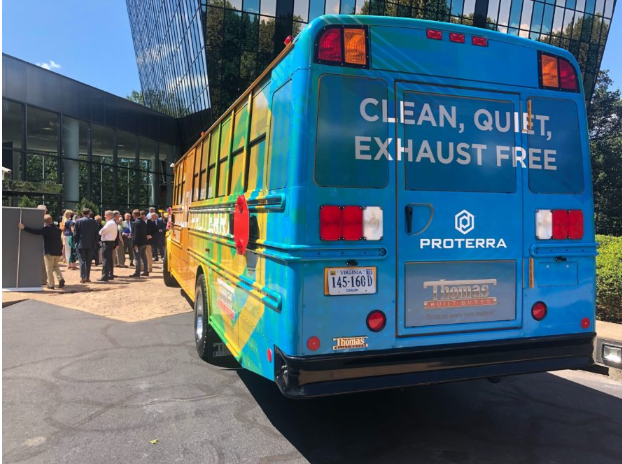E-Newsletter
Fairfax County leads the way in embracing innovative methods for transportation
Fairfax County residents are accustomed to embracing technological change. Whether in work, school or play, new innovations are readily embraced and ideas enthusiastically implemented. With that in mind, this week’s E-bird Extra highlights two advancements in an area that touches on everyday life for many Fairfax County residents—public transportation.

Image courtesy of Envision Route 7
Envision Route 7
A major commuter east-west commuter route, Leesburg Pike — Route 7 — is one of the busiest roads in Fairfax County. To alleviate congestion, the Northern Virginia Transportation Commission has proposed a new solution: Envision Route 7. This proposal is part of a larger study by the Fairfax County Department of Transportation (FCDOT)’s Board Transportation Committee to develop a Bus Rapid Transit (BRT) system along Route 7. According to the proposal, the BRT would run 11 miles between Spring Hill Metrorail station and Mark Center, diverting briefly to connect to the East Falls Church Metrorail station. Tysons Reporter said the BRT system would have its own dedicated lane for a majority of the route, decreasing travel time and expanding travel options for commuters.
Earlier this month at a Board of Supervisors meeting, FCDOT provided an update on the proposal, which includes the recommendation that the bus system be divided into three segments:
- Segment 1 – Spring Hill Metro station to International Drive
- Segment 2 – International Drive to I-495
- Segment 3 – I-495 to I-66
FCDOT is considering several alternatives for each segment, simulations of which will be carried out this fall before feedback is solicited from civic associations. To learn more about Envision Route 7, visit novatransit.org.
FCPS considers electric school buses
In addition to a new transportation route, Fairfax County is also introducing a new type of bus — school bus, that is.
Fairfax County Public Schools (FCPS) operates the second-largest school-bus fleet in the country, with more than 1,600 buses.
In August, Dominion Energy made a pledge to replace all of Virginia’s diesel school buses by 2030, with the utility paying the cost difference for the new buses and funding the installation of charging stations and other necessary infrastructure. The utility’s goal is to have 50 buses on the road by 2020. Benefits to students include cleaner air to breathe and a quieter ride to school, while FCPS should enjoy lower maintenance and fuel costs. Until Dominion Energy stepped in, electric bus technology has been prohibitively expensive.

Image courtesy of WAMU
WAMU reports that Dominion Energy’s plan includes a newer technology called vehicle-to-grid (V2G), which uses batteries to store energy that can be fed back into the electric grid during an emergency or when energy demands are high. Since buses are parked for most of the day, Dominion would have access to a fleet of batteries that can utilize this technology.
For the past five years or so, says The Washington Post, school districts across the country have started to experiment with electric transportation, although Dominion’s project is the largest to date.
School districts in Northern Virginia, Central Virginia and Hampton Roads will be the first to participate in the groundbreaking program, receiving the first 50 buses as soon as next year. According to Utility Dive, bus manufacturers will submit bids through an RFP process.
On Tuesday, Governor Ralph Northam issued a press release announcing that Virginia will dedicate $20 million from the Volkswagen Environmental Mitigation Trust (VW Trust) to help accelerate the deployment of electric school buses across the Commonwealth. “Replacing aging buses is better for the health of school children and will save school divisions money,” said Secretary of Education Atif Qarni. “Each electric school bus can save districts nearly $2,000 a year in fuel and $4,400 a year in reduced maintenance costs, saving tens of thousands of dollars over the lifetime of a bus.”
News Travels Fast
Stay ahead of the curve with the latest business news from Northern Virginia. Receive updates on moves, incentives, workforce, events and more.